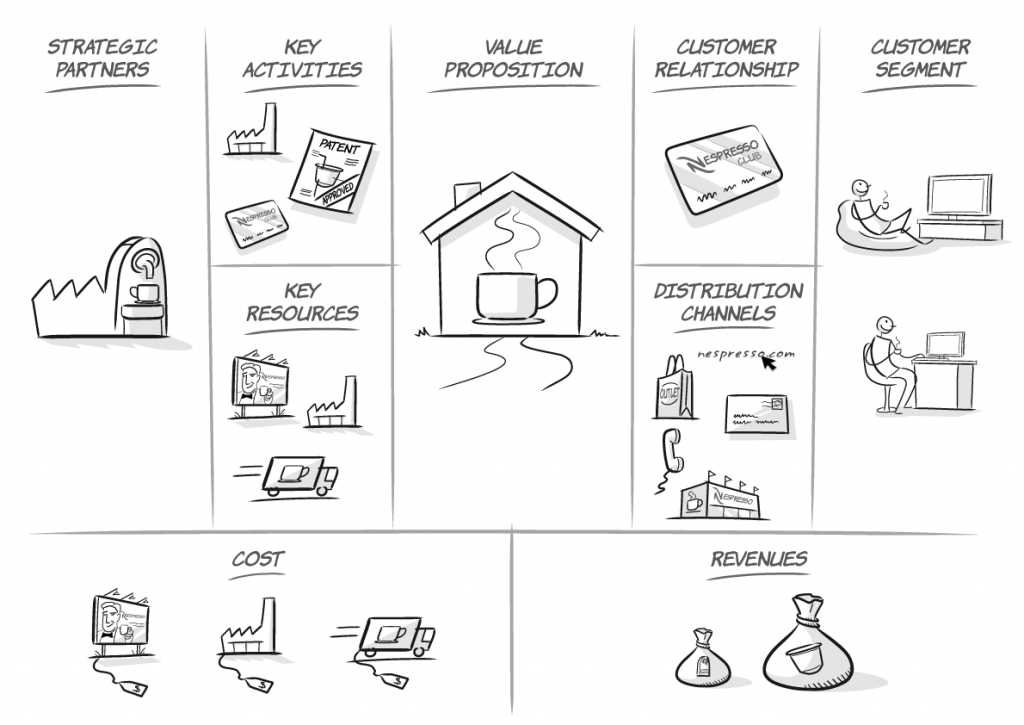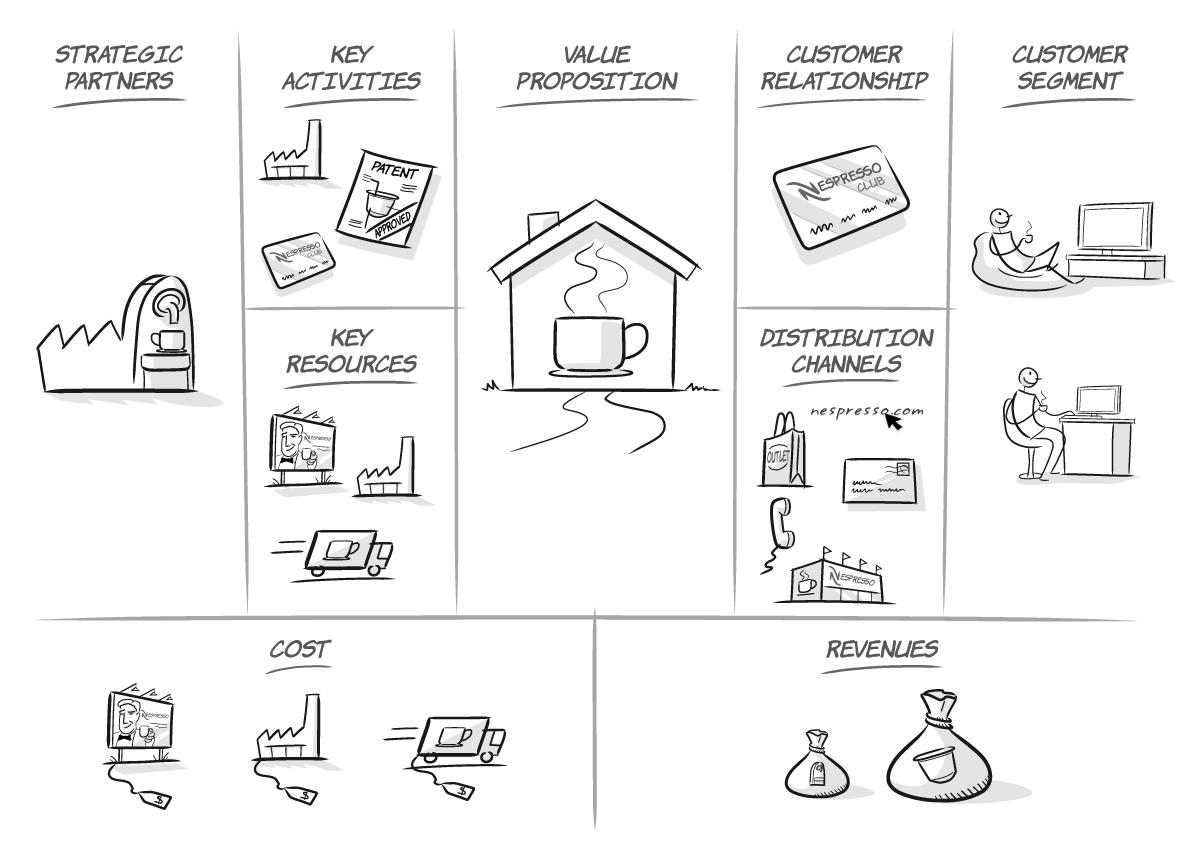You are probably aware that there are a *lot* of ways to visualize or model business and management related things. There are few fields of expertise with so many models and theories (sure, math and physics but they are older).
There is even a book that specifically tries to list the most well-know models. There are already over 100 models in this book and the writer told me that the next update will feature even more! Most models have solid reasoning behind it. It might be easy to dismiss them as blah-blah or just common sense. But you should always try to think of a model as a tool, a means, and not a purpose by itself. The tool itself is not the goal, the tool can help you reach your goal. So a model is like a hammer and you are the carpenter. And it should help you gain insight, enable you to communicate key parts of what it is you’re doing or shed some light when decisions need to be made. And most importantly: grow your business.
So it helps to know your tools. Know when or why to apply a model and how it can help you. One particular model I came across recently is the Business Model Canvas. And I like it a lot.

It is a bit different. The idea behind the BMC is explained in a book called Business Model Generation. You can already tell when you hold the book that it is different. The landscape shape will stick out of any bookcase and it has beautiful typography. It is written by Alex Osterwalder but not by him alone. The book is created in a sort of crowd sourced way. Over 400 business and management experts provided Alex their input. I know what your thinking: that this model has become overly complex. But the opposite is true, this process has resulted in a very clear, usable, understandable, adaptable model you can use to visualize and challenge what it is your are doing with your business.
The template for the model canvas has 9 boxes. Each box is a question and you need to answer it. (This is the BMC. Really!)
Here is what I like about it:
- There are only 9 questions.
- It fits on a single piece of paper: easy to share and read.
- You move trough it from right to left. This flow helps your thought process.
- You can update, add, delete the model as you learn new things. It is not static. Your business is not static either. This models understands that.
- You can fill in the model yourself or within a team. And because the model fits on a piece of paper, you can have discussion about it, without it being to complex for others to understand.
- You can use the model for subsets. Fill it for specific use-cases, products, markets or the overall business. The BMC is flexible like that.
- When filling in the model with different people for specific use-cases, you can switch up parameters. Like: what if our price was lower? What if we didn’t do things online? Asking those questions, will challenge the BMC and thought process and the ultimate question (see last bullet).
- It asks all the important / relevant questions, what/who is your input / output. If it is not asked, it is not important.
- It tries to work towards answering one specific and the most important question of all: what kind of value are you adding?

Answering this question is of course answering the reason for your company’s’ existence and/or (potential) success. The BMC is released under a Creative Common license, so you are free to use it. Of course there is a lot more to tell about the BMC. Like what the next steps are after this or how to transform business when the BMC implies you should. Or how it ties into the Value Proposition Canvas. But for now this should get you started!

